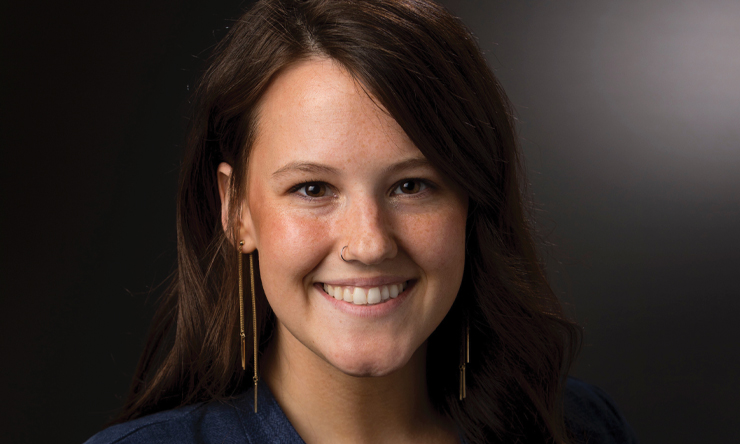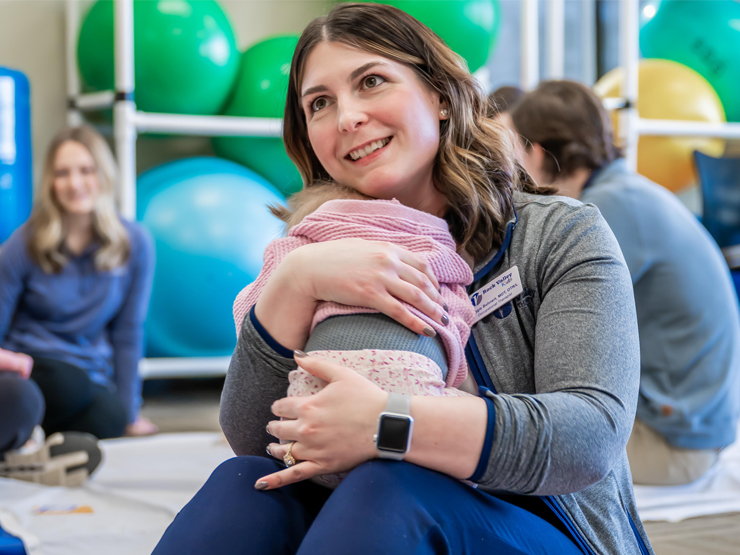As a student at St. Ambrose, Ken Hartman '39 often gazed at the moon. Never would he have guessed then that he would one day play a part in sending Americans into outer space to walk on that very moon.
He recalls being a busy student at St. Ambrose, sometimes taking 18 credits a semester, and dabbling in about every course of study. He didn't know it at the time but he was preparing himself for a career in aerospace that would make use of just about every area he studied: psychology, statistics, engineering and languages.
Before that, however, there was a war to fight, and Hartman was drafted into the U.S. Army in 1942.
He was assigned to the Army Specialized Training Program and shipped to Antwerp, Belgium, where he interrogated German prisoners. He would survive 175 days of continuous enemy air and V-weapon assaults on the city, which killed nearly 9,000 civilians and injured almost 25,000 more.
After returning to the states after World War II, Hartman earned his master's degree in engineering from the University of Iowa. From 1946-1951, he was a chief industrial engineer at Deere & Company. He would eventually earn a doctorate in psychology from the University of Iowa, and it was his knowledge in psychology that proved almost more valuable than his engineering experience once he began working for North American Aviation, Inc., the company contracted by NASA to build the first Apollo spacecrafts. Hartman was primarily in charge of settling disputes between the spacecraft design engineers and the astronauts.
"The astronauts only wanted a joystick and some pedals," Hartman says. "The NAA engineers wanted every bell and whistle known to man.
"The NAA designers hated the astronauts because the astronauts hated them," he confides frankly, his memory still crisp after more than 40 years. "I could not stop the tsunami of engineering change orders and spent my time more profitably placating the flyers!"
With input from the astronauts, he helped design the interior of the spacecraft for functionality. He consulted with Air Force pilots and submarine operators about what it was like to be in a confined area for hours on end. Even then, muscle atrophy and bone brittleness, the effects of prolonged exposure to a zero-gravity environment, were taken into account.
"We had to figure out the worst thing that could happen and make sure it didn't happen," he says.
Tragically, one of the worst things did happen Jan. 27, 1967, when Apollo 1 astronauts were killed in a fire inside the command module during a training exercise at Cape Kennedy. Hartman's friend, astronaut Virgil I. "Gus" Grissom, perished along with two others, Edward White and Roger Chaffee.
Hartman says, though, that nobody close to the project ever believed Apollo 1 would perform as it should.
"We were sweating bullets," he said about testing the module. "The engineers and I, we were sitting there, and we didn't believe for a minute that it would work. Even the guys going didn't think it would work. They got in this thing, which we knew wasn't ready, and did a test on the ground. They died in 30 seconds."
But back then the United States was on a mission to beat the Russians to the moon. In Hartman's opinion, it seemed that human life took a backseat to winning the space race.
Eleven years of secrecy, infighting and destructive competition seem to have colored Hartman's perception of his work at NAA. He would leave there in 1971 for other positions, including traveling around the globe while teaching statistics to the officers of five different ships during the '70s and '80s. In 1978, he spent Thanksgiving in South Korea, Christmas in Hong Kong, and New Year's in Singapore. When one ship he was on passed through the Antarctic Ocean, Hartman recalls that it was like "a crystal palace bobbing around in the ocean."
When Hartman finally retired in 1989, he and his wife, Janet, moved to Eugene, Ore. Yet by the next year, Janet would pass away after an 18-month-long illness, and Hartman went back to work, this time, as a volunteer speaker in Oregon State University engineering classes. "I was only too glad to do it."
In the early 1990s, the aerospace corporation Boeing also called on Hartman's expertise when it wanted to reduce the size of its airplane cockpits for two pilots instead of three.
Yet despite his place in history shaping the United States' first forays into manned space flights, it is his service to his country during WWII that Hartman regards as most definitive. He would rather be remembered as a soldier than as an engineer.
"The years in WWII are even more historic than the space programs," he says proudly.
-R. Youngblood
News
Share This Story



